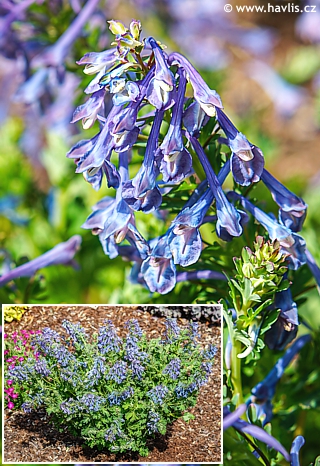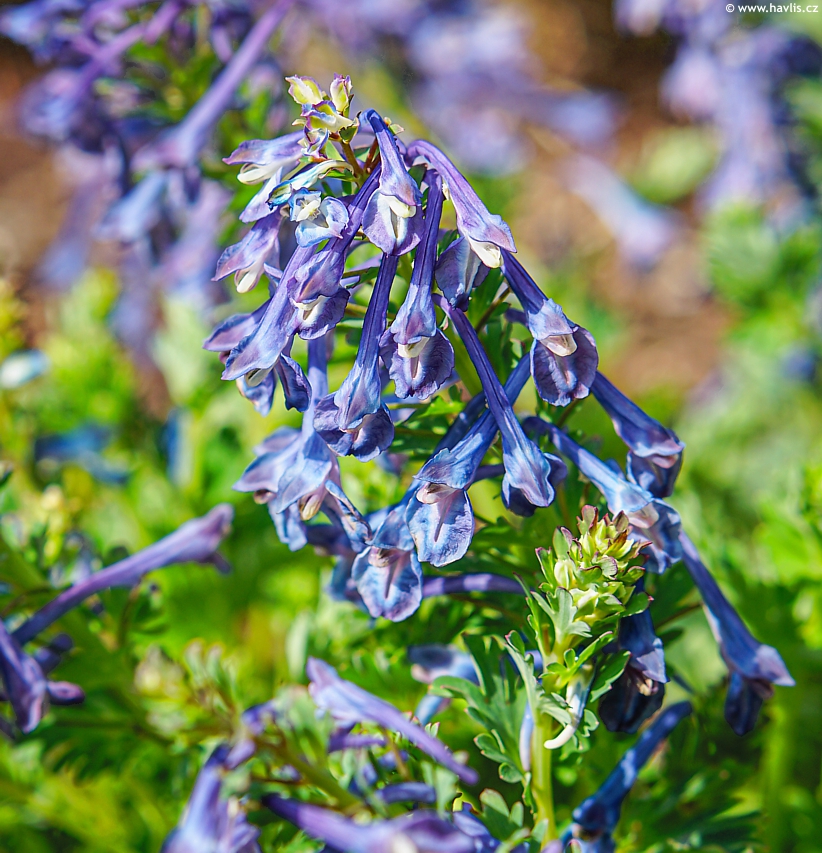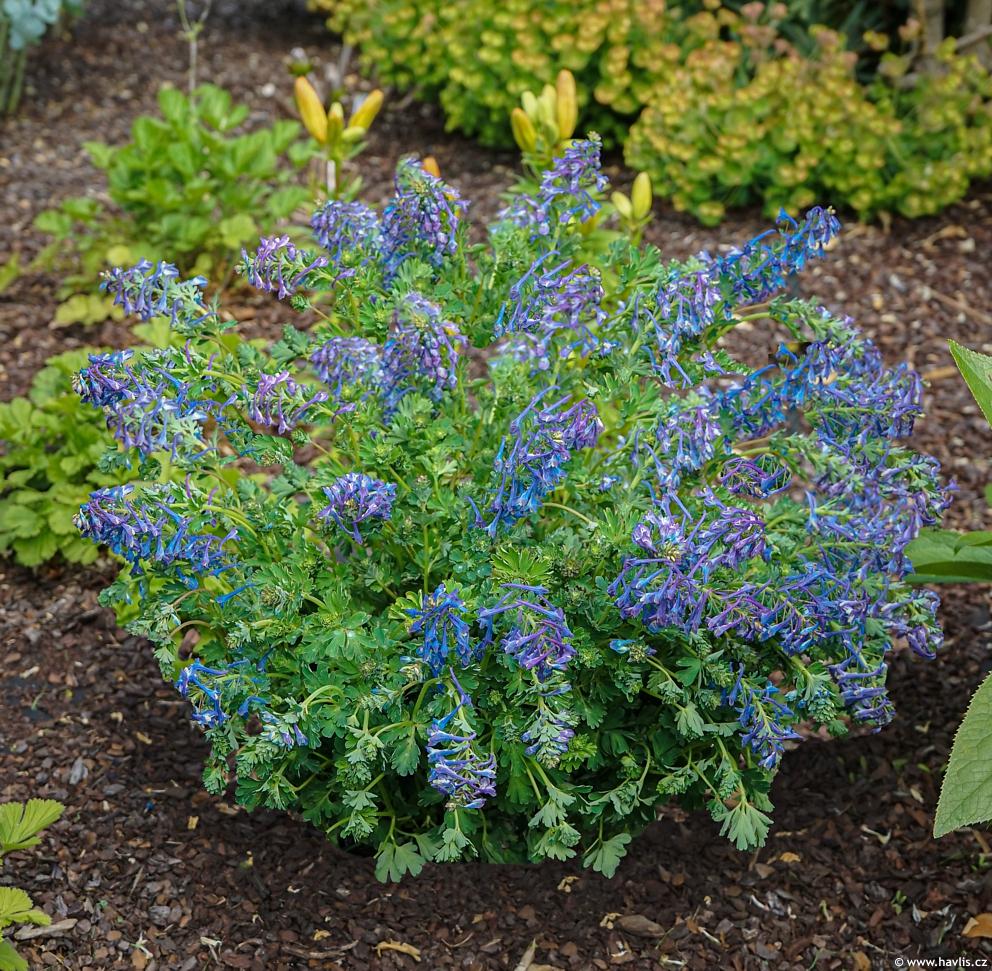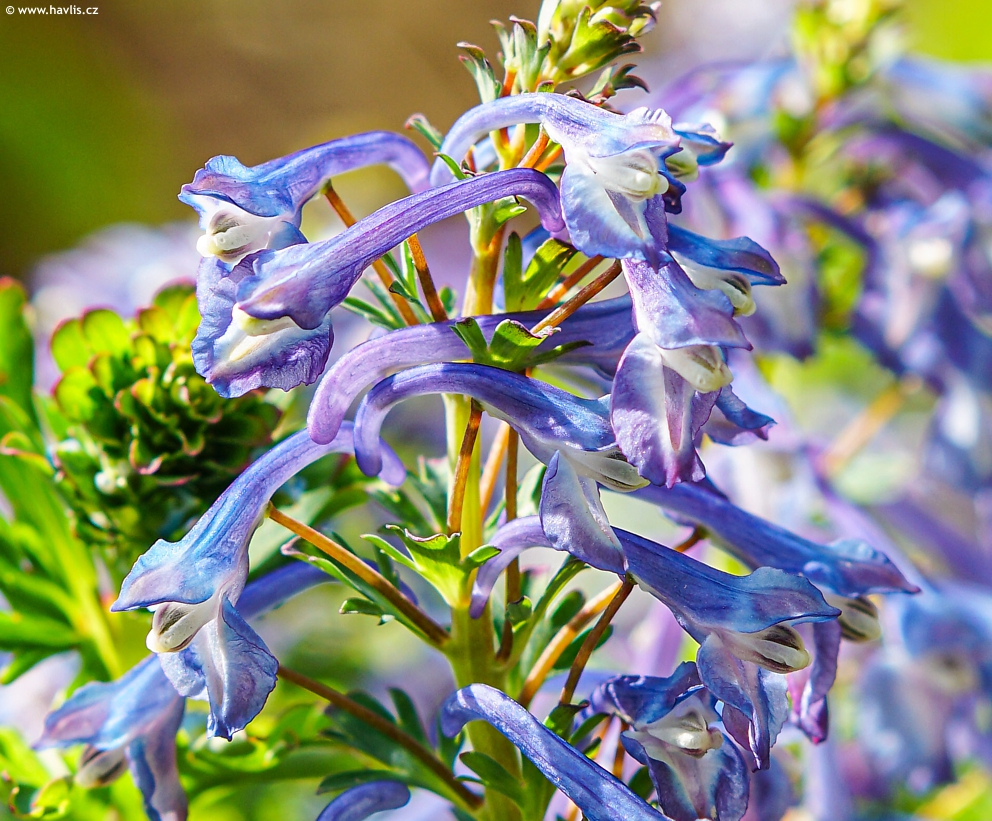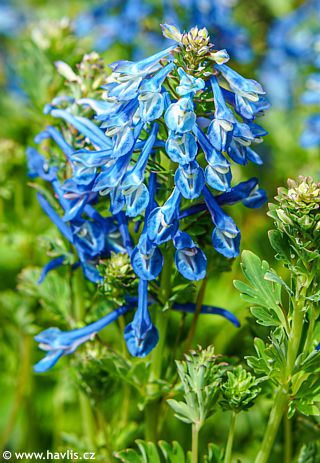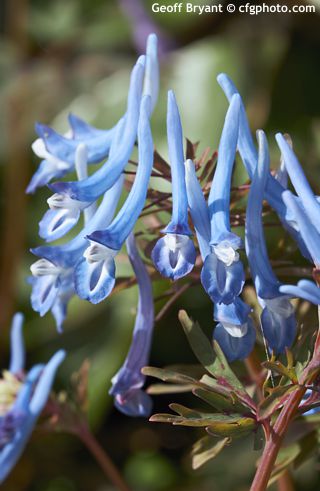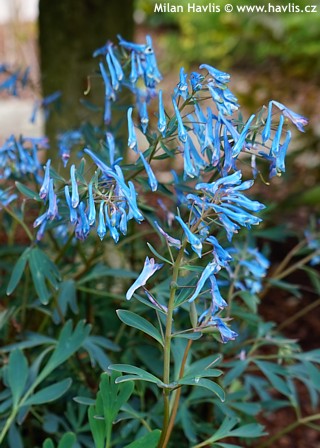Corydalis calycosa corydalis


Corydalis
Perhaps no other colour attracts so much attention like blue. Reason being that blue pigment used to be rare and expensive, and in some cultures the wealth of a family would be assessed by the number of blue ornaments and objects in the house. Its natural sources were indigo (plant) and various minerals, especially lapis azuli. Cobalt salt was another one and the method to achieve it was known already to ancient Romans and Egyptians, yet its real fame came from old China when during the reign of the Tang Dynasty (7th - 10th century) cobalt blue was frequently used on several types of wares, especially their true transparent porcelain which still today is a sought-after collectible. When it comes to plants, we all know that true blue flowers are in minority, so we are thankful for each of them which shows some blue tint. Such as corydalis whose flowers come in several shades ranging from sky blue, brilliant blue, to cobalt blue.Corydalis calycosa is very similar to c. flexuosa or c. elata. Its advantage, however, is a very dense growth and a stronger habit with an extended flowering period. From about mid-June are formed upright racemes composed of unusually shaped, narrowly elongated, tubular flowers with a wide end. Their outer colour ranges from cold cobalt blue to warm deep violet. The throat is almost white.
The flowers top about 40 cm tall stems, which arch slightly at the sides of the clump, but are not pendulous - they just make a wide, relaxed V-shape. The main flowering flush lasts 3-6 weeks, depending on the age of the plant and the amount of nutrients in the soil. Deciduous leaves are fresh green above and pale blue green below, tri-ternate with rounded lobes.
Corydalis is a perennial from the forests of China. It likes partly shaded or shaded but not too dark locations. It will cope with partial or filtered sun if the ground is kept evenly moist and the plant is protected during the hottest hours of the day. It is quite picky about soil type as we need to imitate its natural habitat (woodland margin or a moist semi-shaded meadow): fresh, free-draining but moist, fertile soil, never waterlogged, always cool. Hardy to about -27 °C (USDA zone 5b).
Last update: 21-06-2023
Goods are shipped all over Europe. For Russia and U.K. and for further details please read about SHIPPING OPTIONS HERE.
Are you interested in a serious discount for orders NOV-FEB? Check your options here.
THE PRICES INCLUDE VAT of 15%. For quick conversion you can use 1 CZK = approx. 0.04 EUR
- STANDARD QUALITY - Plants of this group are 1st class quality with number of branches and overall density adequate to their size and age, considering they were container grown.
- DE LUXE QUALITY - This label guarantees a luxurious quality of manually selected plants that, compared to their height and age, are exceptionally dense and beautiful.
- EXTRA - These plants are usually mature and bigger specimens with exceptional overall appearance.
- STANDARD (as described in the plant form) means a tree with a trunk of 190-210 cm and a crown at the top, unless specified differently. The commercial size for trees is their girth measured in the height of 1m from ground.
- HOBBY - These plants are of the same quality as our standard-quality plants but younger and therefore cheaper.
- SHRUB - a woody plant with branches growing bushy from the ground level.
- HALF-STANDARD or MINI-STANDARD - a small tree with shorter trunk, its size is usually specified.
- FEATHERED - These are trees with branches growing already from the base of the trunk and up along the stem.
- GRASSES and PERENNIALS - Sizes given usually read the diameter of the pot or the clump, as specified.












